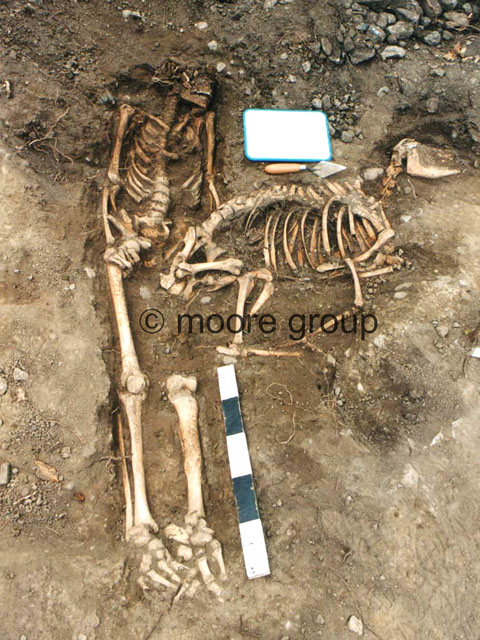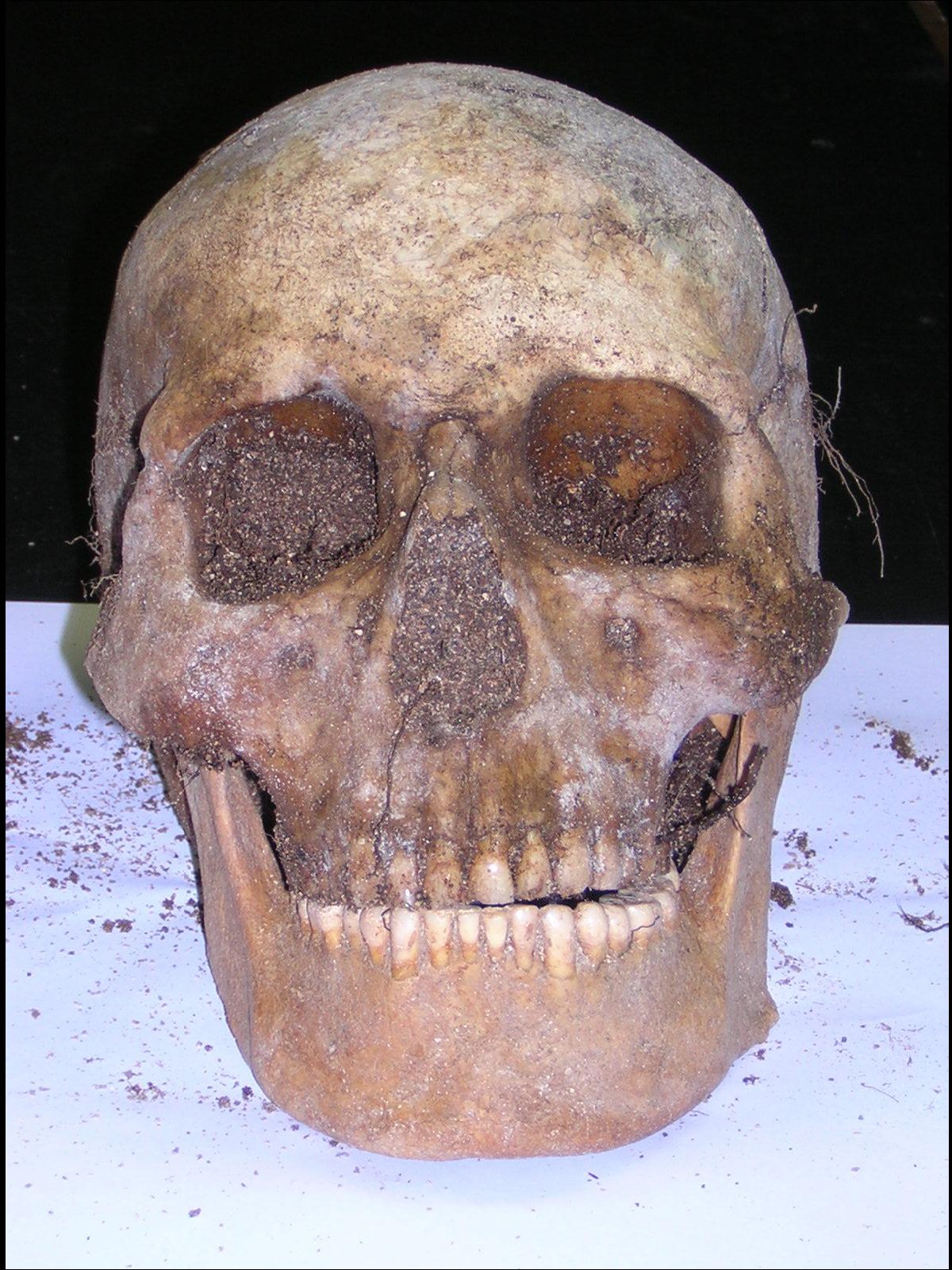Early Christian Settlement at Corofin
The discovery by Moore Group archaeologists of the skeletons of 58 people, believed to date from Early Christian times at Corofin, Co. Galway, provides the first palpable evidence of a previously unknown early settlement in the area. The find was made during development work for a housing estate in 2006. Tom Rogers of Moore Group was called in to carry out archaeological monitoring of the development. During monitoring we found 7 skeletons and a more extensive excavation was launched in 2006 during which we uncovered 51 more or less complete skeletons and assorted bones from other bodies.
The early inhumations may well be from the Early Christian era. Most skeletons were adult or young adult with two recorded juveniles and, intriguingly, a sheep was also buried within the burial ground cutting the pelvic area of one skeleton, leading to some unlikely suppositions.

The only speculation that a graveyard might be found in this area was from H.T. Knox writing in 1901, who noted that Corofin, which was a manorial village referred to as ‘Corphyn’, lacked a medieval church. The modern village of Corofin is to the east of the river Clare, but as the Galway Archaeological Inventory notes, the old roadway and castle are indications that the former nucleus of the settlement may have been on the north side of the river. Around the eastern limit of the burials at Corofin, a substantial curved ditch up to 2m wide was uncovered. The ditch was not fully excavated as it was preserved in situ but no burials were found outside its limit and clearly it defines the eastern edge of the graveyard. This suggests that the burials at Corofin are within an enclosure of early Christian date, only the eastern edge of which was excavated.
Supine, extended inhumations are not necessarily Christian. However, due to the association with the enclosing ditch, it is considered likely in this case. The slight rise in an otherwise generally flat landscape near a crossing point may have been an ideal location for a small early church. If the Down Survey is accurate this would have been a very important route from one side of a large lake to the other in a well populated area, judging from the amount of raths (enclosed forts) in the district. A comparable but smaller example may be found with an enclosure at Knockea Co. Limerick (Edwards 1990), where a sub square enclosure 18m x 18m was surrounded by a bank and ditch with the entrance to the west. It contained 65 extended inhumations mainly orientated east-west and with one crouched. A row of large post holes ran along the top of the bank. Only one real post hole was found at Corofin but others may have been disturbed by agricultural activity.
The fact that in the thirteenth century the settlement of Corphyn was important enough to have warranted the granting of a market and a fair and was furthermore at a strategically important crossing point could be taken as evidence that a settlement existed here prior to the Anglo Norman invasion. If so, the early Christian enclosure might have continued in use within the manorial village until the focus of the village shifted across the river, perhaps due to changing drainage patterns. It is hoped that radiocarbon dating and continuing osteological analysis will shed some light on the lives of the people buried in this long forgotten graveyard.
This entry was posted on Sunday, February 10th, 2008 at 7:39 pm. It is filed under About Archaeology, Papers & Reports and tagged with About Archaeology, archaeological consultants galway, Corofin, environmental consultants galway, galway, Ireland, skeletons.
You can follow any responses to this entry through the RSS 2.0 feed.





[…] A good reason to keep your contexts clear, reported by the Moore Group: […]
[…] should warn you, when looking at the article by the Moor Group, to be careful what you pack. The known, the unknown, and the under-known. Look at what she found, […]
[…] archaeologists working in Ireland, at Corofin, County Galway, may (or may not) have found an early Christian site there, identified by 65 burials in what could, if generously interpreted, be a vallum, an earth rampart […]
Hi Declan,
If you check out Susan Leigh Fry’s book Burial in Medieval Ireland 900-1500, p 107 on burial with animals, you might find it of use
[…] nothing I have ever posted on this blog has got me as many hits as that story I more or less stole from somewhere else about the man buried with a sheep. Every now and then some German forum (mostly) stumbles on it and […]
Hey Bob
Thanks for the visit – nice to hear from you. Apologies for the delayed response. Will look it up…
Declan
Hello,
Greetings from San Francisco.
Just ran across this — nice to be cited.
Cheers,
Sue Fry
Thanks for visiting Sue – Nice to hear from you.